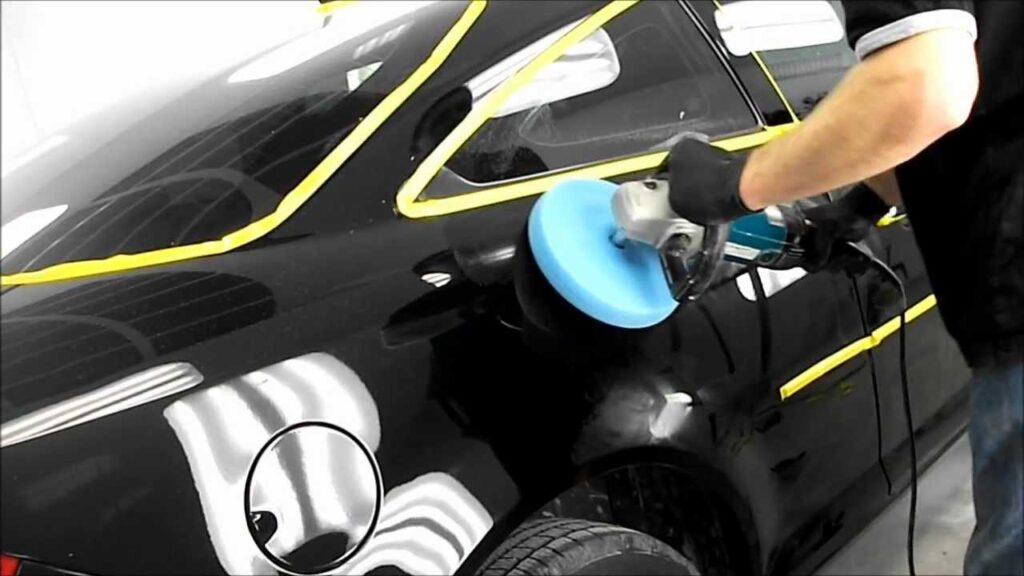Introduction
Have you ever noticed tiny scratches, swirl marks or a dull appearance on your car’s paint? Over time, even the most carefully maintained vehicles lose their showroom shine. This is where paint correction steps in—a process that not only revives but transforms your car’s finish. Let’s dive into the fascinating world of paint correction and why it matters for your vehicle.
The Science Behind Paint Imperfections
Understanding Swirl Marks
Swirl marks are those faint circular scratches that become visible under direct sunlight. They occur when dirt or debris gets trapped in your cleaning tools, creating micro-abrasions during the washing process.
Causes of Scratches and Oxidation
Scratches often result from everyday wear, such as brushing against bushes, improper washing or even automatic car washes. Oxidation, on the other hand, happens when your car’s paint reacts with oxygen, leading to a faded or chalky appearance.
The Role of Environmental Damage
Harsh sunlight, acid rain, bird droppings and road salt are major culprits in degrading your car’s paint over time. These factors create a need for paint correction to restore the original shine.
What is Paint Correction?
Definition and Purpose
Paint correction is a meticulous process that removes imperfections from a car’s clear coat. By using specialized tools and techniques, it eliminates scratches, swirl marks and other blemishes, revealing a smooth mirror-like finish.
How It Differs from Polishing and Waxing
Unlike polishing, which merely enhances the appearance or waxing, which provides temporary protection, paint correction physically removes imperfections for long-lasting results.
Levels of Paint Correction
One-Step Correction
Ideal for cars with minor imperfections, this process uses a single polishing compound to restore shine.
Two-Step Correction
A two-step correction involves both cutting and polishing, making it suitable for moderate imperfections.
Multi-Step Correction
For heavily damaged paint, a multi-step correction delivers the most dramatic results by addressing deeper scratches and oxidation.
Tools and Materials Used in Paint Correction
Essential Equipment for the Process
- Dual-action or rotary polishers
- Rubbing Compounds & Polishes
- Microfiber towels
- Wax Polish or Coating
- Detailing lights for inspection
Types of Polishing Compounds and Pads
Different abrasives and pads are chosen based on the severity of paint damage, ensuring optimal results without over-polishing.
The Step-by-Step Process of Paint Correction
Inspection and Preparation
A thorough inspection identifies the severity of the imperfections and guides the correction process.
Washing and Decontamination
Deep cleaning removes dirt, grease and contaminants that could interfere with the polishing process.
Claying the Surface
A clay bar is used to lift embedded contaminants, leaving the surface smooth and ready for polishing.
Polishing Techniques
Using a machine polisher, the technician carefully applies the chosen compound to remove imperfections and enhance the paint’s clarity.
Common Mistakes in Paint Correction
Over-Polishing the Surface
Excessive polishing can thin the clear coat, causing more harm than good.
Using Incorrect Tools or Products
Using the wrong pads or compounds can lead to uneven results or further damage.
Neglecting Proper Preparation
Skipping steps like decontamination or inspection can compromise the outcome of paint correction.
Benefits of Paint Correction
Restores the Shine and Depth of the Paint
A corrected surface reflects light evenly, creating a brilliant, glass-like finish.
Increases the Resale Value of the Car
A well-maintained exterior can significantly boost your car’s market value.
Offers Long-Term Protection
When paired with protective coatings, paint correction shields your car from future damage.
How Long Does Paint Correction Last?
Factors That Affect Durability
Environmental conditions, maintenance habits and the quality of the correction process influence how long the results last.
Maintenance Tips for Prolonging Results
Regular washing, waxing and avoiding abrasive cleaners help maintain the corrected finish.
Paint Correction vs. Repainting: Which One is Better?
Cost Comparison
Paint correction is generally more affordable than a full repaint while delivering excellent results.
Quality and Aesthetic Differences
Correction retains the original paint, ensuring color consistency and authenticity.
DIY Paint Correction: Is It Worth It?
Pros and Cons of DIY
While DIY saves money, it requires significant skill, knowledge and investment in tools.
Essential Skills and Knowledge
Understanding polishing techniques and using the right materials is critical for success.
Professional Paint Correction: Why Choose an Expert?
Expertise and Experience
Professionals like GlossZilla Car Detailing Studio can assess your car’s needs accurately and deliver flawless results.
Access to Professional Tools
They use advanced equipment and products unavailable to most DIYers.
Myths About Paint Correction
Paint Correction Removes Clear Coat
While it removes a tiny layer, the process is designed to preserve the integrity of the clear coat.
It’s Only for Luxury Cars
Any car regardless of its brand can benefit from paint correction.
When Should You Consider Paint Correction?
Identifying Signs of Paint Damage
Faded paint, visible scratches and swirl marks are clear indicators that your car needs correction.
Ideal Scenarios for the Process
Before selling your car or after years of wear, paint correction can make a significant difference.
Conclusion
Paint correction is more than just a cosmetic upgrade—it’s an investment in your car’s longevity and value. Whether you choose to DIY or go to a professional, the results are always worth it when done correctly. Revive your car’s finish and enjoy a gleaming ride!
FAQs
-
Is paint correction safe for all cars?
Yes, it’s suitable for most vehicles with a clear coat. However, professional assessment is recommended. -
How much does professional paint correction cost?
Costs vary but typically starts from Rs. 3,000 onwards depending on the level of correction needed. -
Can paint correction remove deep scratches?
It can reduce the visibility of deep scratches but may not eliminate them completely. -
Does paint correction make the car paint thinner?
A small amount of the clear coat is removed, but it’s minimal and controlled, ensuring the paint’s integrity remains intact. -
How often should paint correction be done?
Typically, once every few years is sufficient, depending on your maintenance habits and the car’s exposure to environmental factors.

